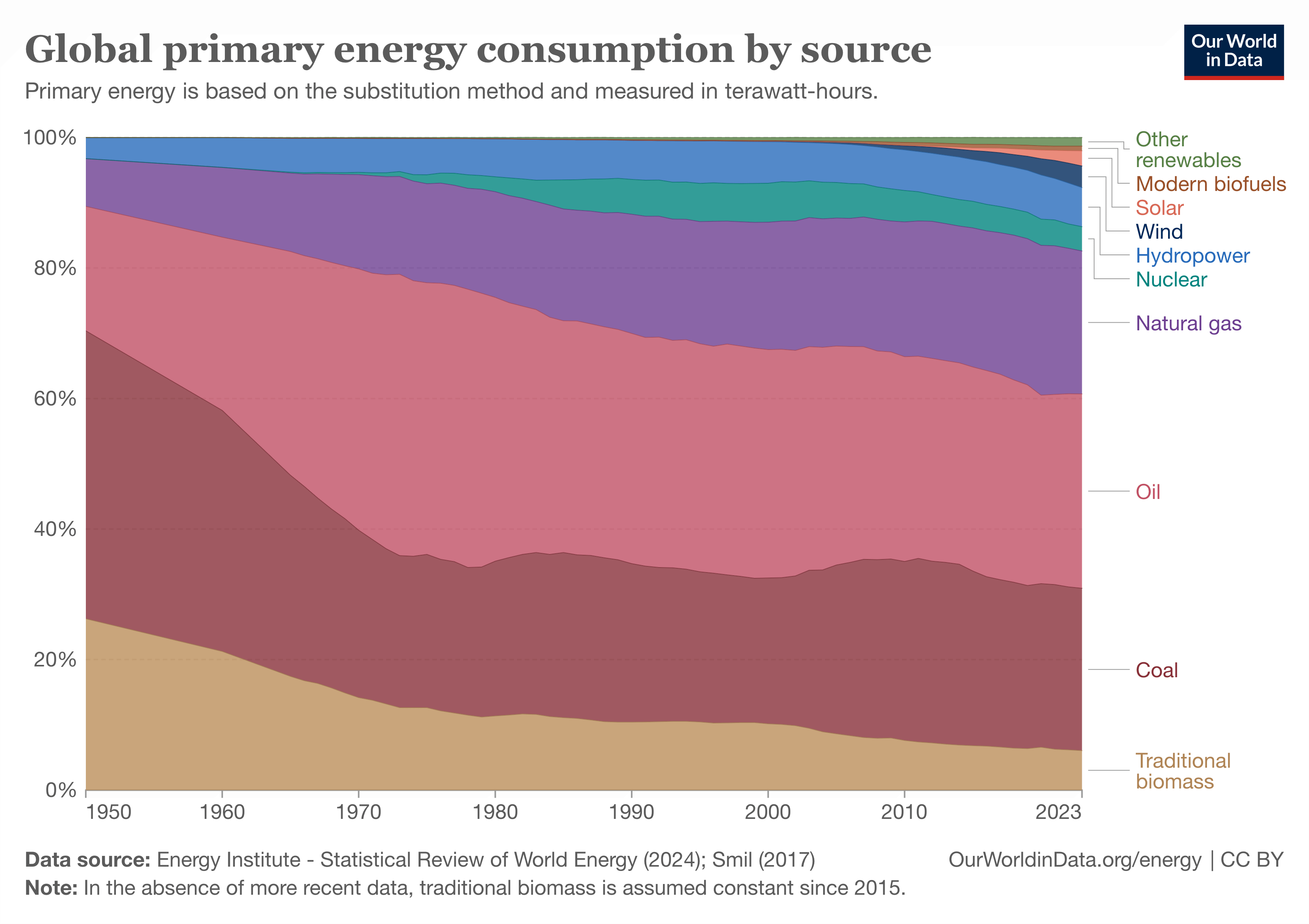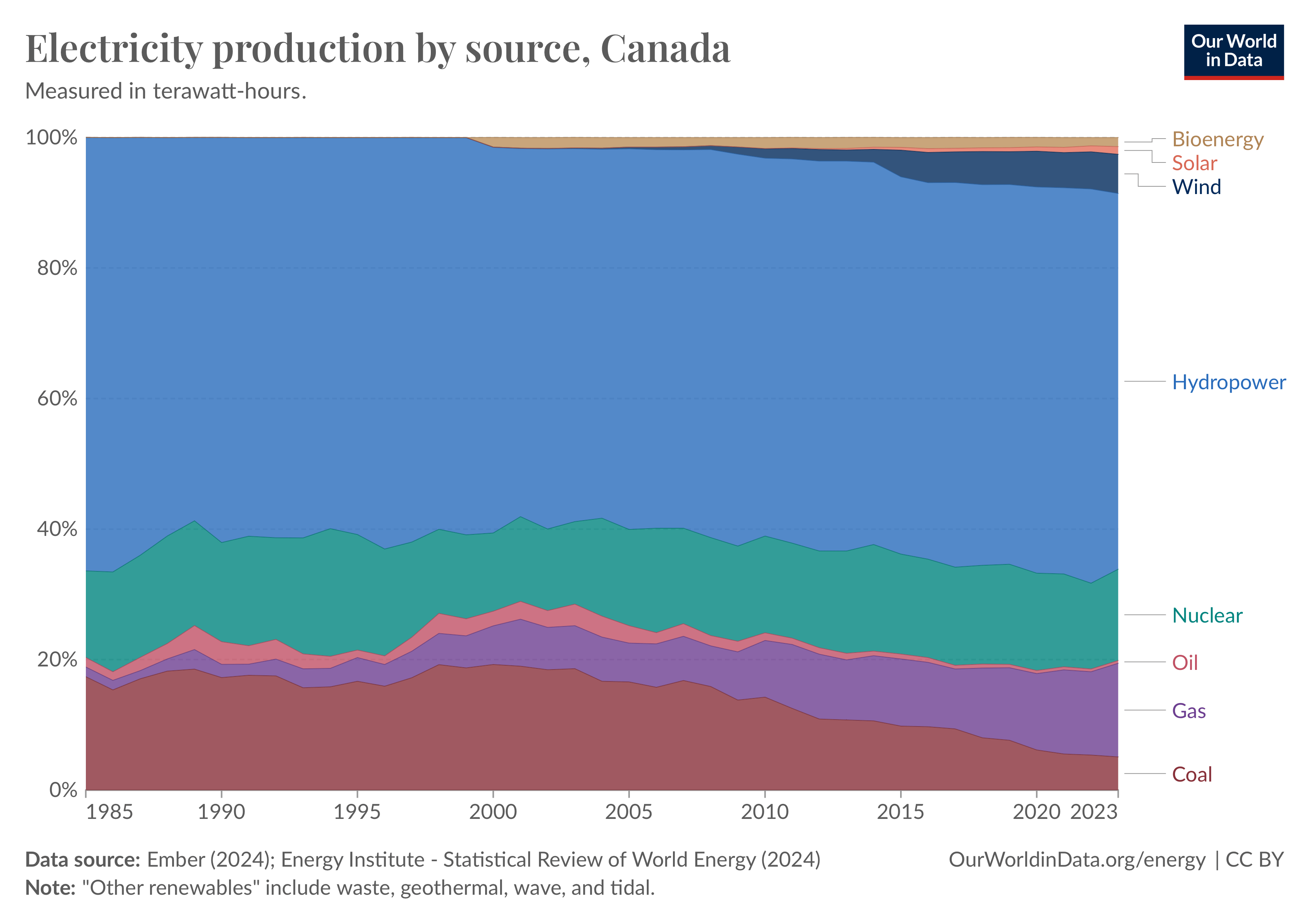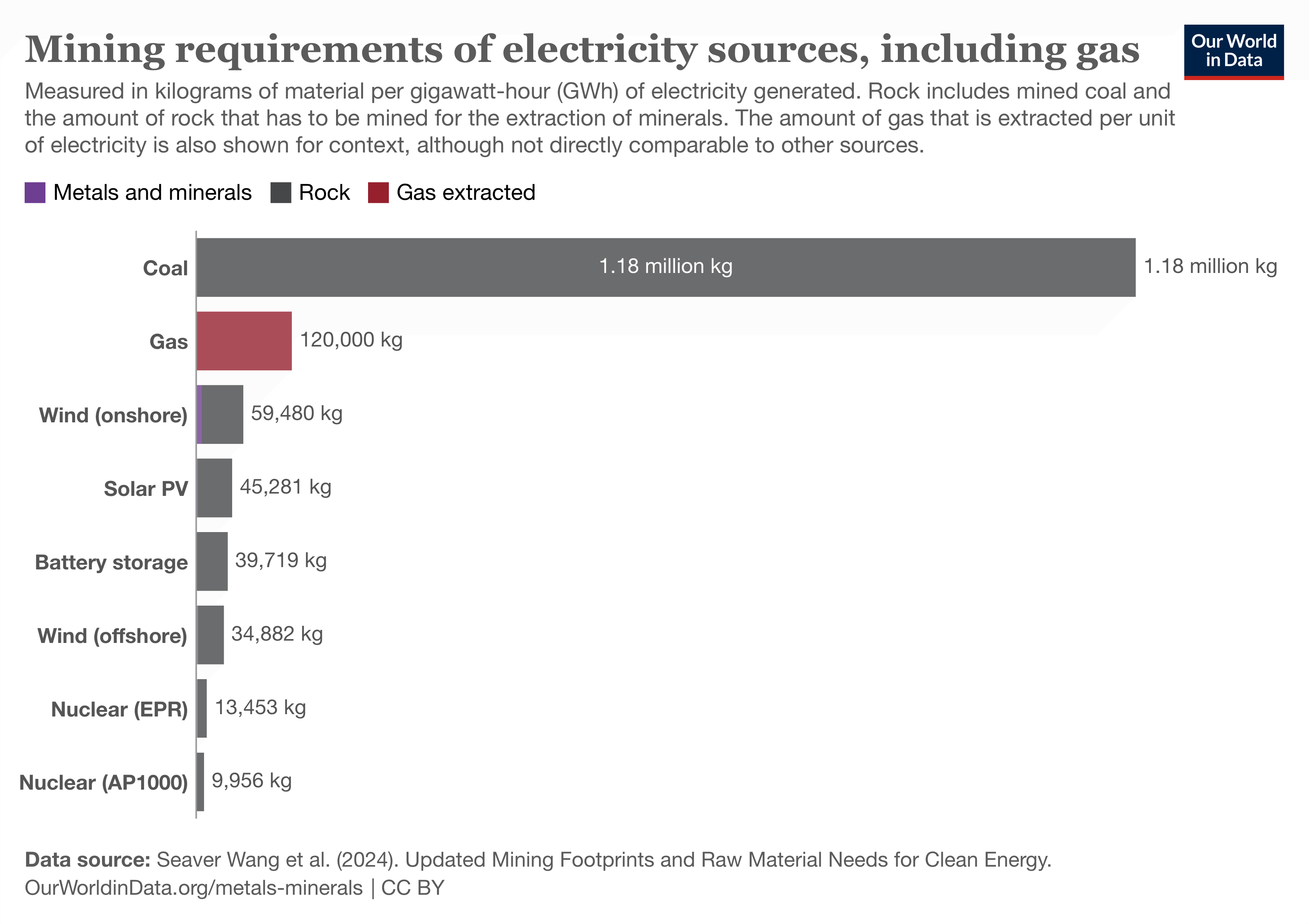What better way to understand concepts big and small than through data visualizations? In this blog series, we curate insightful visuals to provide commentary on events, academic theories and themes related to economics and transportation. Join us as we explore and engage with interesting ideas from around the world.
The transition to a low-carbon economy is a complex undertaking that requires global cooperation to meaningfully reduce emissions. This week’s Data Vizdom explores the evolving energy landscape, examining the environmental impact of different energy sources and how Canada’s energy production has shifted over time toward a cleaner mix.
Energy is a fundamental driver of economic activity, and its generation contributes significantly to greenhouse gas emissions. As economic activity has surged, absolute emissions have reached unprecedented levels. At a macro level, the world’s energy mix has evolved considerably since the mid-20th century. While some countries have transitioned to low-carbon energy sources, a broader shift is needed to reduce emissions at an aggregate level to address this challenge.

Energy Mix – Our World in Data (July 2020)
A closer look at Canada’s electricity production reveals that the country has had a relatively low-carbon energy mix compared to the global average. Notably, significant progress has been made in reducing the proportion of electricity generated from coal and oil since their peak in the early 2000s. Additionally, Canada’s electricity mix has become more diverse, with new low-carbon energy sources being integrated.

Electricity Mix – Our World in Data (July 2020)
The visualization below provides an overview of greenhouse gas emissions produced by different energy sources per kilowatt-hour (kWh) of energy. It highlights the significantly lower emissions generated from non-fossil fuel energy sources. This perspective helps to put into context the environmental impact of Canada’s decreasing reliance on coal.

Carbon Neutrality in the UNECE Region: Integrated Life-cycle Assessment of Electricity Sources – UNECE (October 29, 2021)
When considering the raw materials needed to produce one gigawatt-hour (GWh) of energy from low-carbon sources, there is considerable variation in the types and quantities of inputs required. Additionally, the geographical concentration of some of these materials means that the transition to low-carbon energy will incur significant costs related to mining new minerals.

Low-carbon technologies need far less mining than fossil fuels – Our World in Data (September 23, 2024)
However, this is not entirely true; when compared to the mining requirements for producing an equivalent amount of energy using coal, low-carbon energy sources have a significantly lower mineral footprint. Although constructing a nuclear power plant may require comparatively more resources than a coal plant, the amount of rock that needs to be mined for fuel is much higher in the case of coal.

Low-carbon technologies need far less mining than fossil fuels – Our World in Data (September 23, 2024)
As developing countries continue to grow, they face the immense challenge of achieving economic progress while avoiding the energy transition hurdles currently confronting developed nations. Balancing growth with sustainable, low-carbon energy solutions will be crucial to ensuring that they do not repeat the same environmental missteps of the past.
Help us make this series even better! We would love to hear your thoughts and suggestions on content makers we should follow to discover noteworthy projects and visualizations. Write to Bilal Siddika on LinkedIn or via email.
